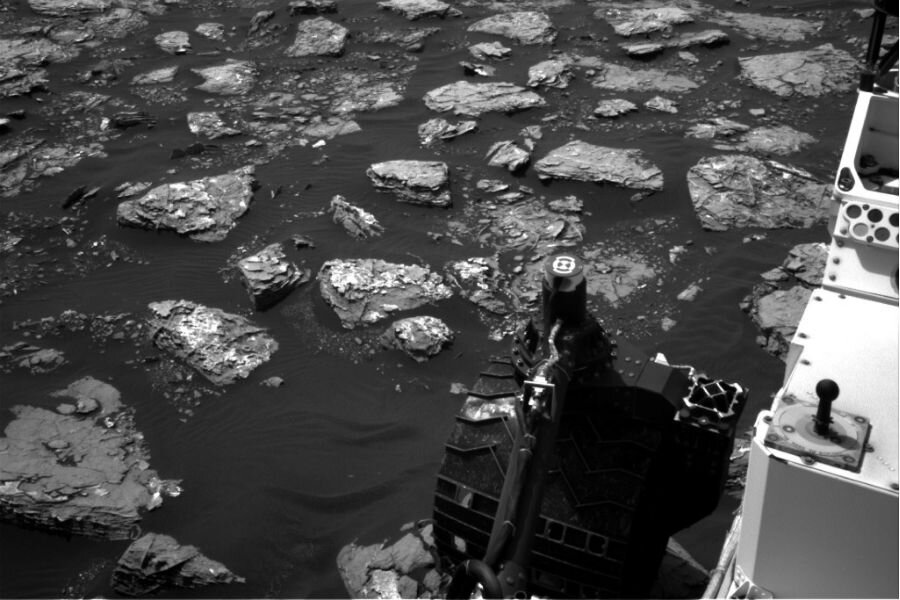Mars may have supported life for hundreds of millions of years
Loading...
NASA's Mars rover, Curiosity, has become something of an expert on the red planet's Gale Crater since it first landed there in August 2012.
During that time, the probe has explored layer upon layer of rock in search of information about the microbe habitability of the area over time. According to scientists on the project, the mix of minerals suggests a great deal of changes and fluctuations in the area of the crater in the past, but it now seems that none of those changes would have been enough to preclude the development of life there.
In fact, the window of habitability on Mars – at least in the Gale Crater region – may extend tens or even hundreds of millions of years, scientists say. Evidence of water flow and dynamic geological processes point to an area where life could have indeed existed, though direct evidence of that life is still lacking. Yet Curiosity's recent discoveries of new minerals suggest water flow and chemical conditions that would support life on Earth.
As the NASA rover climbs uphill, away from older geological layers into newer rock, the composition of the minerals beneath its wheels has changed again. Hematite, boron, and clay minerals have become more abundant as Curiosity moves upward, indicating a wet environment on the surface that deposited sediments into the Martian soil over time.
"A sedimentary basin such as this is a chemical reactor," explained John Grotzinger, a member of the Curiosity team, in a statement. "Elements get rearranged. New minerals form and old ones dissolve. Electrons get redistributed. On Earth, these reactions support life."
Curiosity is currently ascending Mount Sharp, a large sediment deposit rising from the floor of the crater. The rover is in an area known as the Murray Formation, 656 feet above the crater floor where Curiosity landed four years ago.
As Curiosity climbs from one mineral layer to another on Mount Sharp, scientists are documenting the chemistry and inferring what the environment was like when these materials were deposited or altered. The abundance of hematite (Fe2O3) at higher levels, taking over from less-oxidized magnetite (Fe3O4), for example, has led Curiosity scientists to conclude that the atmosphere might have been warmer during that geological timeframe, or at least that there was increased reaction between the sediments and the Martian atmosphere.
"It turns out that this Murray Formation is really sort of a bonanza of all the things we intended to study when we picked the landing site," Dr. Grotzinger told Reuters. "We see all of the properties in place that we like to associate with habitability. There's actually nothing really extreme here, for the most part, so this is all very good for habitability over very long periods of time."
But will Curiosity last long enough to reach the top of Mount Sharp? Even as it makes these new discoveries, the aging rover is experiencing some technical problems. Curiosity's drill, which lets the other instruments probe beyond the rusted exterior of rocks, currently has a malfunctioning motor. The engineering team thought they had solved the problem after it was first noticed a week ago, but it has cropped up again, putting all drilling on hold for troubleshooting.
While the rover's original mission ended after two years, scientists hope to continue renewing the mission indefinitely – as long as Curiosity remains viable.
In the meantime, scientists are extracting as much information as they can from Curiosity's latest batch of geological data.
"The more complicated the chemistry is, the better it is for habitability," Grotzinger said. "The boron, hematite, and clay minerals underline the mobility of elements and electrons, and that is good for life."








